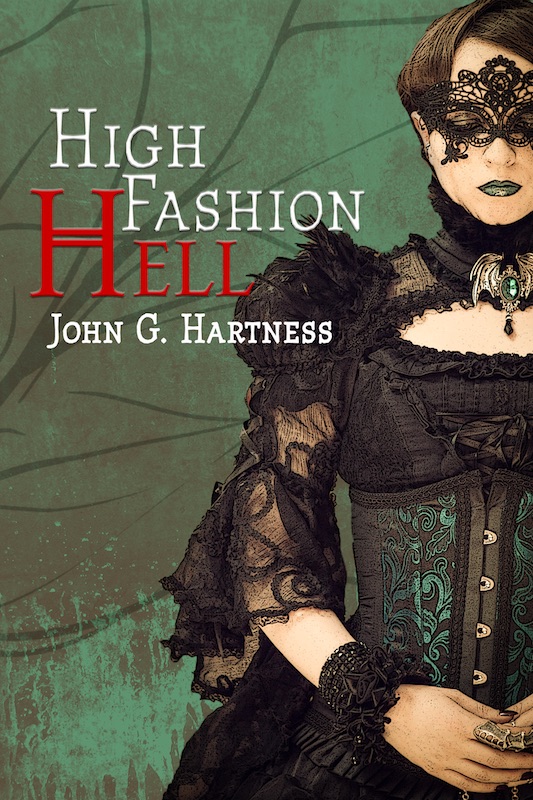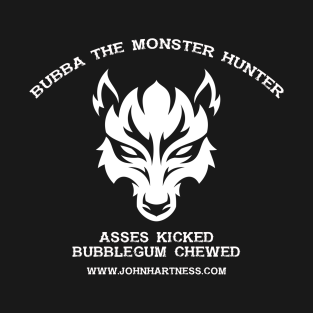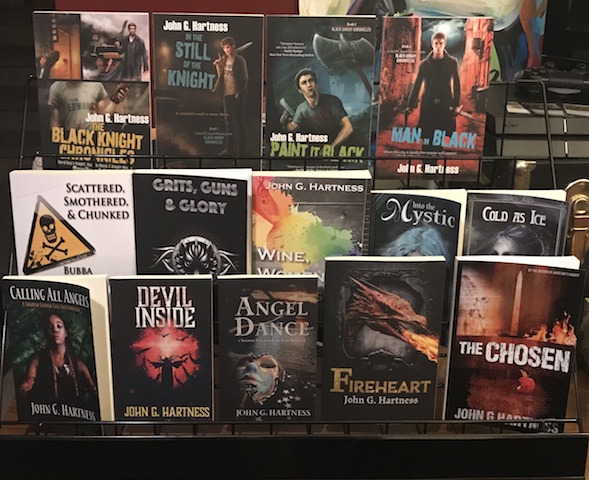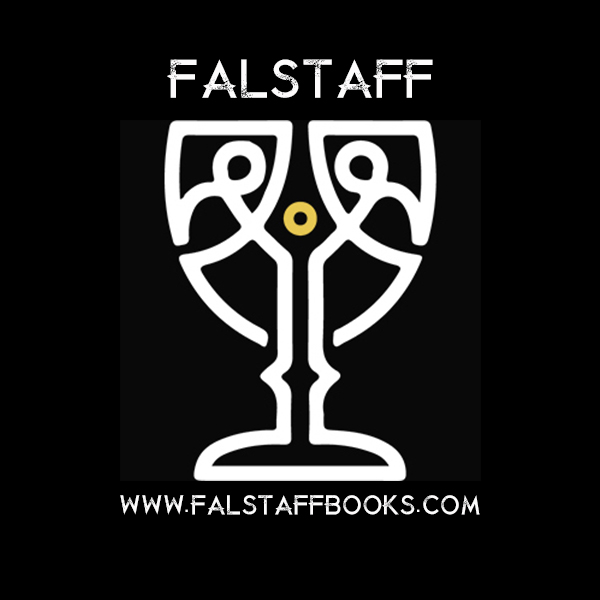
by john | May 23, 2016 | Real Life
Dear Mr. Morgan,
I don’t know you. I don’t know your politics, your faith, or anything about you other than your position as president of the Charlotte Chamber, and that you seem to have a nice tan. And that you speak for the Charlotte Chamber in your recent letter to the Charlotte Observer. I don’t speak for anyone but me. My opinions are not those of a millionaire CEO, or even a six-figure-earning MBA VP in one of the downtown towers. I’m just a small businessman working out of his spare bedroom trying to make ends meet. As such, I’m probably not terribly important to you and the people you claim to represent.
But here’s what I am, Bob. I’m as staunch an ally to Charlotte LGBTQ community as I know how to be. And I vote, both in the booth and with my dollars. And apparently there are a lot of me around, because when the last City Council failed to pass an anti-discrimination ordinance in Charlotte, we voted in a Council that would. And they did.
And then your buddies in Raleigh, who you are showing more loyalty to than the people you are hired to promote in Charlotte, reached down and yanked away not only the blanket of protection that Charlotte put into place for LGBTQ citizens, but also stripped away rights from every municipality in our state, and from everyone who has ever held a job in North Carolina. And if our City Council “lit the match” by passing a non-discrimination ordinance, our state legislature “went nuclear” by not only removing protections for LGBTQ citizens, but also anyone else that is wrongfully terminated for a reason other than a very narrow set of reasons that follow almost identically the federal EEOC guidelines. And if HB2 was merely a reaction to Charlotte’s “overreach,” why does the majority of this bill address subjects that have nothing to do with Charlotte non-discrimination ordinance?
Charlotte’s ordinance had nothing to do with minimum wage, yet it’s part of HB2. Why is that?
Charlotte’s ordinance had nothing to do with bringing suit against an employer in state court, yet that ability is removed by HB2. Why is that?
If this was really about bathrooms and protecting the innocent women and children of our state, why does only one in three sections of HB2 – 33% of the law for the mathematically challenged – have anything to do with bathrooms?
This is not about bathrooms, Bob. It is about making sure that our people are protected, not just from discrimination in restrooms, but from wrongful termination, and from being paid unfairly for the work they put in.
And you want to compromise on these issues? You want to fly in the face of Bank of America, American Airlines, Wells Fargo, Red Hat, Time Warner Cable, PepsiCo, and Rob Reiner? Come on, Bob, even Archie Bunker’s son-in-law “Meathead” knows this law is wrong!
Negotiation on human rights gets us “separate but equal.” Negotiation on human rights get us “domestic partnerships.” Negotiation on human rights gets us right back to Jim Crow.
I am not calling for “inaction” by my City Council. I am calling for steadfast resistance. I am calling on Mayor Jennifer Roberts and Council Members John Autry, Patsy Kinsey, Julie Eiselt, and LaWana Mayfield to stand firm against these calls to “compromise,” which are really just Raleigh telling Charlotte’s leadership to toe the line they have drawn. I don’t want city leadership that will toe anyone else’s line. I want city leadership that will push that line of equality and progress forward.
And Bob, if you, as president of the Charlotte Chamber, aren’t interested in pushing that line forward, then you should resign. Yesterday would be a good time for that. Because if you aren’t part of the solution, you’re part of the problem, and bowing to Raleigh’s demands and giving a victory to a gerrymandered and corrupted process is no solution.
Make no mistake, Bob, we are in a fight for the soul of our state. Not just about bathrooms, or LGBTQ equality, but about progress versus fear, about acceptance versus ignorance, and about honest concern for the well being of your fellow man versus manipulative, fear-based politics that exist only to line the pockets of the few at the expense of the many.
So pick a side, or stand aside. But there must be no compromise, and history is watching.
by john | Dec 31, 2013 | Magic:the Gathering
As I’ve gotten back into playing Magic:The Gathering, it’s given me a way back to blogging, but I realize that not everyone who reads my blog plays Magic. Or has any idea about how to play Magic. And when my friend T was trying to learn the game, she wanted to know what book she could buy that would teach her how to play, and how to build decks, and all that jazz. That’s when I realized that there really isn’t a good beginner’s guide to Magic right now. So I figured I’d write one.
You know, along with all my other projects.
But I also thought that if I did it as a series of blog posts first, that would allow me to kill multiple birds with one stone. I get to write the Magic book I want to see available. I get my blog back on track and it becomes a place for people to find out more about me and my writing. And I get to do it in small enough snippets to fit it in between the other projects I’m working on.
So here’s the beginning. This is Part 1, the general concepts.
You are a Planeswalker. This is the intro to Magic:The Gathering. Four little words, that started a bajillion-dollar business. You are a Planeswalker. Right there in that sentence is a lot of information, and a lot of mystery. It tells you that you’re going to go somewhere outside yourself, you’re going to have an element of roleplaying in the game, and that there will be something new and exciting involved. Planeswalker – what the hell is that, anyway? Well, we’ll get there.
At its heart, Magic (or MTG) is a collectible card game. Two or more players (but for the purposes of most examples here, two) take on the role of wizards trying to destroy their opponents. Both players start with a predetermined life total, and they can win the game either by reducing their opponent’s life total to zero or by forcing them draw a card when they are out of cards to draw. That’s most of it. There are a few alternate win conditions that are dependent on cards, but those are the most common paths to victory.
As with life, there are plenty of examples in MTG that contradict the basic rules. There are advanced cards that literally change the win conditions of the game, but they are few and far between. What I’m going to try to do is present the normal circumstances of the game, and you keep hold of the basic understanding that if there’s a card on the table that says that the normal rules are suspended for a time, that card applies. For example, some cards say that if you have X amount of life (where X is typically greater than your starting life total) you win. If that card is in play, you have a third path to victory. But those are outliers and we won’t spend too much time on them.
So you have a deck of cards, and you have a friend with a deck. Those two things are all you really need to play Magic. Cards and a friend. And frankly, if you’re short on one and have plenty of the other, there are local game stores to help you acquire whichever one you’re lacking.
So sit down with your friend and your deck, and you’re ready to play. You each start with 20 life. Your job is to bash your opponent to zero while not allowing your opponent to bash you to zero. You do this by casting spells. And you cast spells by using something called mana.
Mana is the energy of the world around you. The elemental forces, if you will. There are five different colors of mana, each representative of a different style of magic. Over time, you’ll determine what type of magic best suits your personality and play style, and you will naturally gravitate toward those types of decks. Each color has a personality, and types of creatures that go along with it.
The five colors of mana are Black, Blue, Green, Red, and White.
Black is the color of death, disease and things that go bump in the night. Creatures like zombies, vampires, ghouls, ghosts and demons are typically black. Black spells frequently use your life total as a resource. You may spend life to draw cards, summon creatures, deal damage, etc. Black has a lot of spells that take life from your opponent and give it to you. Black also has spells of disruption, that take cards out of an opponent’s hand or destroy the creatures that they have out on the table. I play a lot of black decks, because I write horror novels. What do you expect me to play, decks full of sunshine and unicorns?
Blue is the color of rational thought and control. Blue is also the color of the sea and sky , so lots of fish, merfolk, birds and flying creatures. Blue has long been considered one of the most powerful colors in MTG, partly because it features lots of spells that let players draw extra cards. Having more cards than your opponents is a huge advantage in game play, so it’s never something that should be overlooked. Blue is also very disruptive, because it has counter-magic. Basically spells that just say “NO” to anything your opponent wants to do. I like to play blue because I like to be in control, but it’s sometimes considered an “un-fun” color.
We’ll get to the other three colors next time, because I want to keep these under 1,000 words and I babbled too much in the beginning. Anyway, I’ll try to do at least one of these Magic intro posts each week, and maybe by the end of the year I’ll have the guide written. If anybody has any hookups at WOTC, I need to know who can give me permission to use their trademarks like mana symbols in illustrations.
by john | Dec 27, 2013 | Magic:the Gathering
So I think of myself a something of a Limited specialist. At my local game shop (Get Some Game) we draft every Friday night, and there are a fair number of really solid players there. I’m not the best in the store, but I’m usually in the top 5-6. But Theros drafting has completely dumbfounded me. I have had only limited success in the format since the set came out (get it, limited success in Limited? See what I did there? It’s gonna get worse, I promise), winning very few of the drafts that I’ve played and rarely coming in Top 4 in our weekly drafts.
So there are few things that I wanted to talk about as my failures have continued to pile up, all of these being things that have kicked my ass over the months that we’ve been drafting this set.
1) Green/Red Monsters is pretty good, and often pretty open. I actually went against type last weekend and won a three-round draft going with Green/Red Monsters. I started out trying to be Blue/Red, but moved into Green after a Nemesis of Mortals wheeled. That means it went all the way around the table and made it back to me. When a really strong card like Nemesis of Mortals does this it typically means that no one is playing that color, so you can take anything you want in that color with impunity. From there I started picking up Satyrs. Not the piping one, I think Satyr Piper sucks ass, but all the others. Voyaging Satyr is an incredible two-drop in Green, giving a body and ramp. Satyr Hedonist has an awesome sac effect that lets you drop a monster really fast, and Satyr Rambler is just solid, a 2/1 body with trample for two mana. Slap a Dragon Mantle on him and you’re golden. So I rode the back of my Nessian Asps and my Nemesisesisesis to victory. And a Mistcutter Hydra, which is just really bad news for your opponent who is playing almost mono-blue.
2) Green heroic guys are trap cards. I have been such a sucker for Staunch-Hearted Warriors that I must have lost half a dozen matches because of them. The initial cost is too high, and they fall prey to Voyage’s End or Griptide just as easily as a more reasonably costed card. And don’t get me started on the Battlemaster. So Green heroic guys are to be avoided.
3) Minotaurs are fun. There are a fair number of minotaurs in the set, more than enough to draft a tribal minotaur deck, and the Kragma Warcaller often gets passed around the table, so he can be a fairly late pick. Grab all of those guys you can and just curve out perfectly from Deathbellow Raider to Minotaur Skullcleaver to Borderland Minotaur to Kragma Warcaller and smash face. Supplement with Harpies for flyer defense and it’s a thing.
4) Flyers are tough. Blue/White flyers is totally a thing, and when you add in that white has the best heroic guys, and blue has the best bestow creature, you can make an unstoppable air force pretty easily. Wingsteed Rider, Phalanx Leader, Nimbus Nyad, Fabled Hero, Akroan Hoplite, Battlewise Hoplite, Triton Fortune Hunter are all valid cards, and then at the top of the curve you have all the sphinxes for beatdown. Definitely a solid strategy, but a popular one, so you’re gonna have to fight for your cards and get a little lucky to get enough stuff to make it work. But one Phalanx Leader and a couple of Chosen of Heliod makes for a decent little army.
5) Pay attention to what’s open. I have such a problem with this, because I’ll try to lock in a strategy based on one rare, and I do better when I pay attention to the signals and just take what the table gives me. I have to pay more attention to taking early removal and bombs, then worrying about solidifying a strategy in packs 2-3.
So there are a few tips based off my mistakes in Theros drafting. If you’ve got anything to share, leave it in the comments!
by john | Dec 23, 2013 | Magic:the Gathering
So folks who sometimes stop by this little corner of the interwebs may have seen that over the past year and change I’ve gone back to an old pasttime – Magic:The Gathering (or Magic:The Addiction). I started playing again at LibertyCon because Brandon Sanderson invited me to a draft with him, and I had a blast, remembering how much I enjoyed the game all those years ago. That was the first step. Then I found a local game shop that I really like, and it was all downhill from there. I’ve spent a piece of almost every week since slinging cards, trading cards, and generally nerding out over chunks of cardboard.
For those that have never played, Magic is kinda like a blend of poker, chess and Dungeons & Dragons. It’s a collectible strategic card game set in a fantasy environment with awesome art and lots of smart marketing. And I’m totally hooked. I’ve primarily focused on my Limited play since coming back to the game (Limited is when you take a set of new packs of cards, open them and build a deck from what you find there). I enjoy Limited because the playing field is pretty level, and I can fall back on my game theory and understanding to lead me to some modicum of success. I’m a decent Limited player, but most of the major tournaments are Constructed format (Constructed is when you build a competitive deck from all the cards you own or can borrow and bring that to the tournament), so I decided about a month ago that it was time to step up my Constructed game.
In Magic there are two main ways to build a deck – homebrew something that you think will be awesome, or go on the internet and get the deck list from last week’s major tournament winner. After a year and change of homebrewing without real success, I moved on to Plan B and built a Mono-Black (with a splash of white) deck. I splashed white for Blood Baron of Vizkopa, because it has protection from white and black, which makes it very difficult for many decks to deal with. Once it resolves, it’s going to give a lot of people a lot of problems.
Last weekend was a Star City Games Super Invitational Qualifier tournament at Be There Games in Indian Trail. It’s not far from my house, and I’d heard good things about their events, and a bunch of my friends were going, so I decided to give it a shot. I got there and started to register my deck (bigger tournaments have you list the cards in your deck and then do random deck checks to fight cheating) and took a little advice from my friend Joe. Joe has had a lot of tournament success recently, winning two major events this year, so I listen to his advice. I was running one Prophetic Prism so that when I stole a card with my Nightveil Specter I could cast it no matter what. Joe suggested I cut that, because I’ll often pull land with the Specter and be able to cast the card anyway. That allowed me to add one more Blood Baron, upping the threat level of the deck considerably.
Unfortunately I had no answer for the other glaring error Joe pointed out in my deck. When I was tweaking things I cut back on my white mana sources from eight to four. I cut the Godless Shrines and kept the Temples of Silence, which meant that there could be times I was going to have mana troubles. I took a live and learn attitude to this mistake and hoped it wouldn’t screw me too badly. It didn’t crush me, but definitely ended up being relevant.
Round 1 – I played against a very nice guy from Atlanta (which set my tone for the whole day – all my opponents were very cool, which made the day way better) who was playing a Mono-red aggro deck. This deck feels on the surface like a terrible matchup for me, and in fact I had play-tested with Taco in a small tournament the week before and got my ass kicked by his mono-red deck. My Round 1 opponent had a couple of rough draws, but was still able to get some early threats on board, but I managed to push through his pile of early attackers and bad draws and beat him down 2-0 (Magic tournament matches are best of three).
Round 2 – Another nice dude, one of the other oldest guys in the room (he even had a few years on me). His name was Stephen, and he was playing a white weenie deck (lots of small creatures that kill with a swarming strategy). He couldn’t get anything going and once I resolved a Blood Baron (which has protection from white so he had no answers for it) it was pretty much game over. Game 2 I think I killed him with a swarm of Pack Rats. 2-0 and I was feeling pretty good about my deck and myself.
Then I got to Round 3, and found out what a problem my deck could be when I played a mirror match (a mirror match is what happens when two players piloting the same deck get matched up against each other). And my opponent had a lot more tournament experience than me, and more experience with the deck, and had better draws to boot. So a better player with more experience and better draws beat me in less than fifteen minutes out of the fifty-minute round. I was still in the running at 2-1, but couldn’t afford to lose another match.
Round 4 I clashed with Chris, another nice dude from Augusta. I don’t remember what his deck was, but I remember they were very good matches. Beating him was far from easy, with back-and-forth matches and the first time all day I went to Game 3. We were 1-1 going into Game 3 and it was going to come down to who got their deck going first. I got the advantage and took down the match, but don’t remember any of the details of the match.
Round 5 should have been better than it was, but I got stuck in the mirror match again, against a better player again, with more experience again, and got my ass kicked again.
Since I was eliminated from contention for Top 8 and major prizes (major for Magic, but first place was $400, which is a good day no matter how you look at it) I went ahead and dropped out of the tournament and entered a booster draft. Back in my Limited comfort zone I went 3-0 to win the booster draft and redeem myself a little for the day.






